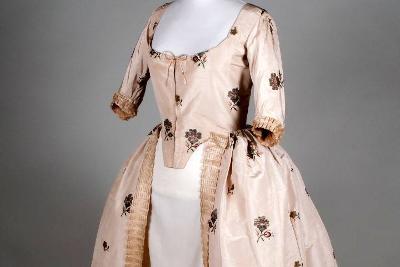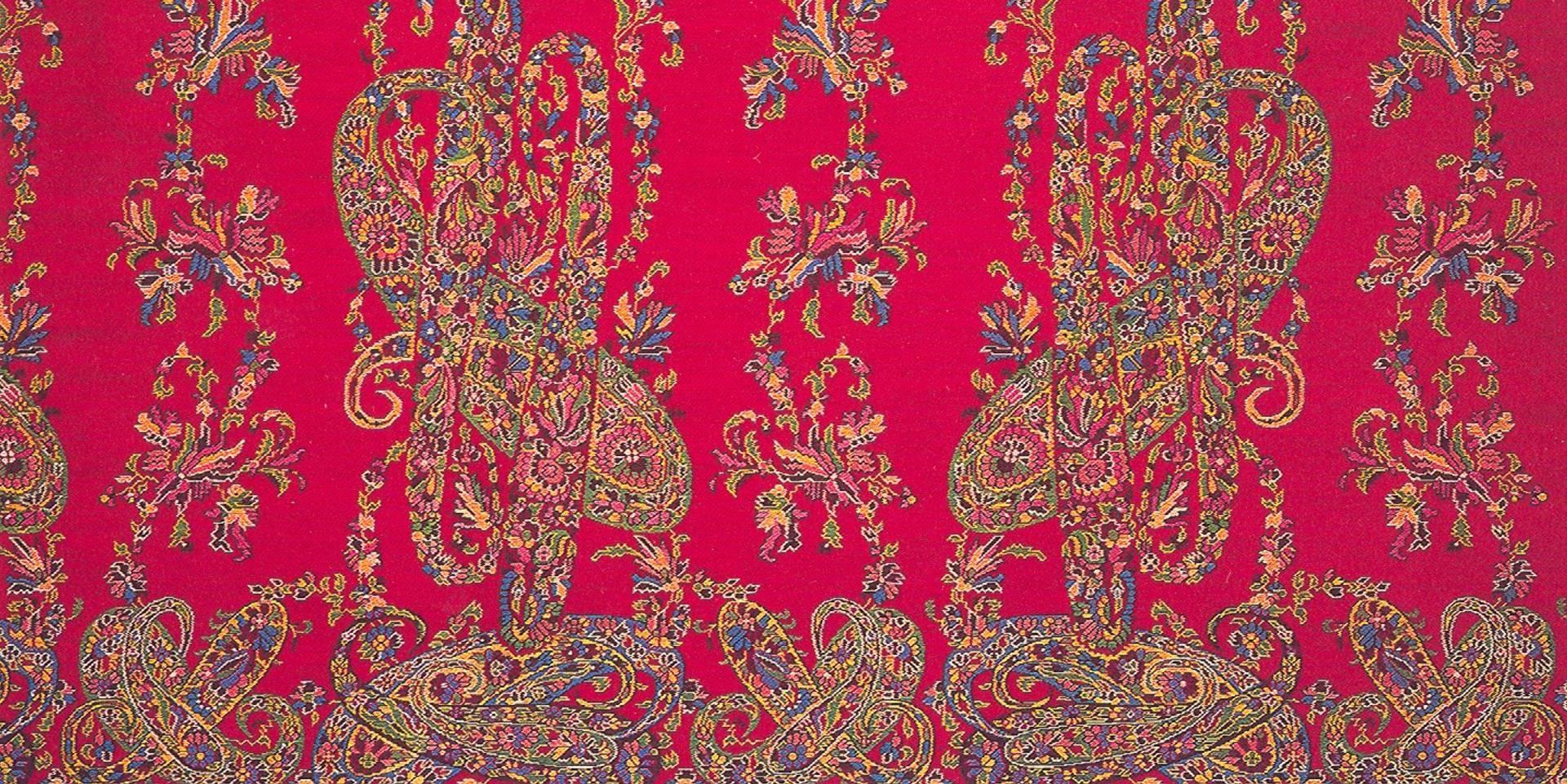Costume and textiles collection
Our costume and textiles collection consists of over 33,000 items of dress, accessories, domestic and decorative textiles ranging in date from the 1500s to the present day.


About the collection
The collection is enhanced with a specialist library and resources collection of more than 20,000 books, paper patterns, fashion plates, photographs, and magazines. The collection reflects changing fashions, functions and technology in clothing and textiles and the historic importance of the city of Norwich in weaving and shawl production.
The costume collection includes everyday clothing and accessories of men, women, and children from the 1700s to the late 20th century. We also have a large collection of personal accessories such as bags, fans, hair combs, parasols, walking sticks, gloves, muffs, stockings, hats, bonnets jewellery and footwear.
Image: Women's shoe with uppers in pale green kid, circa 1790 to 1850.

Menswear collection
There are over 1600 items of men's costume in the collection, dating from the 16th to the 21st century. Items in the collection range from elaborately embroidered silk waistcoats from the 18th century all the way up to a mod revival parka complete with customised patches worn in the 1980s. Specialist collections of working dress, sporting clothing, religious dress and civic and ceremonial uniforms represent the collection's commitment to representing a broad social history through the clothing people wore.
One of the stars of the menswear collection is a group of over 300 items of clothing owned and worn by Major Maurice P Walker (1921-2008), who was known for his immaculate appearance, complete with hat, brolly, briefcase and fresh carnation in the lapel of his bespoke suit. The collection spans a 68-year period, from 1940 to 2008, and includes suits, shirts, collars, coats, hats, shoes, accessories, socks and underwear, as well as specific clothing for sports, pastimes and special occasions.
Image: Clothing owned and worn by Major Maurice P Walker (1921 - 2008)

Domestic textiles
The domestic textiles collection comprises over 1400 items of household textiles and soft furnishings, dating from the 17th to the 20th century, including tablecloths, rugs, cushions, bedding and bed hangings, towels, curtains and napkins. The collection has been actively acquired to show the range of textiles which have been used in homes over the past 400 years, from the great houses of the privileged classes to middle and working-class homes.
Image: Embroidered satin cushion cover depicting the Judgement of Paris, circa 1660-65.
Shawls collection
The Norwich shawls collection includes over 150 complete shawls, and 25 shawl pieces and borders. Norwich was famous for producing dress shawls aimed at the middle and top end of the shawl market from 1800 to 1870, and the city was home to many skilled weavers and dyers who worked for local textile manufacturers throughout the 19th century.
Sewing samplers
The collection of plain sewing samplers contains over 500 books, samples and miniature items of clothing. Plain samplers are examples of stitches, demonstrations of techniques such as buttonholes, or miniature versions of full-sized garments. The earliest samplers in the collection date from the 1790s and the latest to the 1990s.
Timeline
1480

Bircham Cope - This embroidered red silk velvet altar cloth has been cut down from a 15th-century cope - a ceremonial ankle-length cloak worn by Christian clergy. When the cope was made in about 1480, England was still Roman Catholic and English priests would have worn rich vestments such as this to celebrate Mass.
1500

Bellerophon tapestry - This Flemish wool tapestry was made for St Luke's Chapel in Norwich Cathedral. It represents the Greek legend of Bellerophon who killed the Chimera - a fire-breathing hybrid monster composed of lion, goat and snake.
1600

Beadwork picture - This 17th-century beadwork picture shows a bird, a caterpillar and a dog chasing a fox.
Circa 1680 - 1710

Infant's cap - This infant's cap is worked in Italian quilting and Queen Anne quilting.
1700 - 1730

Shoe - This beautiful shoe has a silk brocade upper with a green damask-covered heel. It fastens with a silver buckle inset with paste stones.
1730 - 1740

Waistcoat - Sleeves have been added to this gentleman's waistcoat in green corded silk. The hems, pockets and edges are decorated with heavy silver silk embroidery.
Circa 1918

Dressing gown - A mother made this silk dressing gown for her son while he was convalescing from the injuries he sustained during World War I. The silk fabric dates from the 1860s and may have been cut from waistcoats.
1930s

Lady Fairhaven's evening bag - This evening bag was used by Lady Fairhaven during the 1930s. Lady Fairhaven was married to Sir Urban Broughton MP, who made his fortune as a civil engineer in America. They lived at Anglesey Abbey.
1967

Paper dress - This paper sleeveless summer mini-dress is printed with a bold orange and lavender Op Art pattern. Its owner said paper dresses had a brief vogue but never really caught on!
1990

Duvet of Love - This black duvet cover has been pinned with thousands of badges to create a mosaic of a gay couple embracing.






